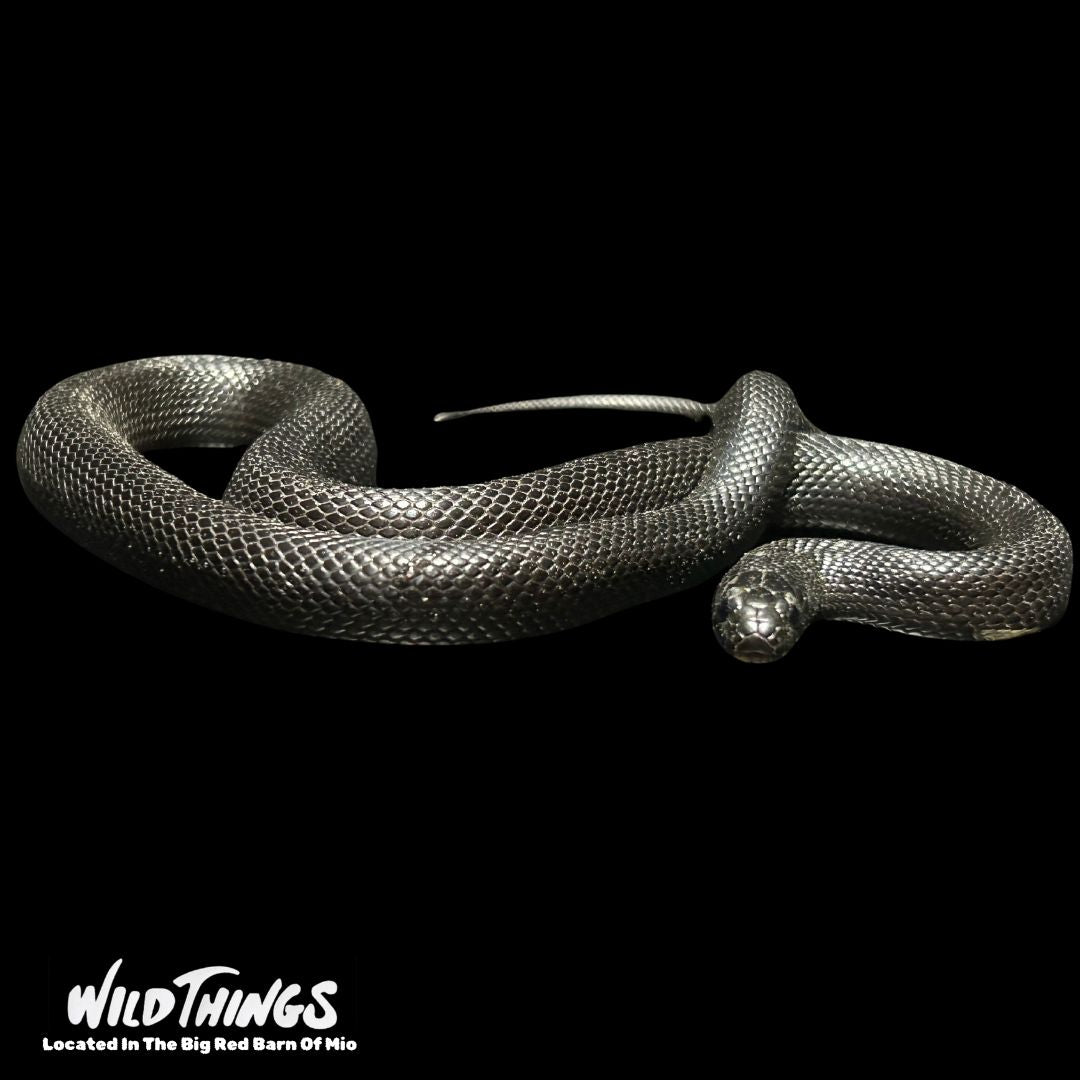AuSable River Outdoors
Mexican Black King Snake
Mexican Black King Snake
Couldn't load pickup availability
Species: Mexican Black King Snake
Scientific Name: Lampropeltis getula nigrita
Origin: Southern Arizona and northwestern Mexico
Lifespan: Expect your pet to live 20+ years with good care.
Size: 40-52”
Enclosure Type: Front opening enclosure
Enclosure Size: 48” L x 24” W x 24” H
Substrate: To create a Mexican Black Kingsnake vivarium, you will need a bioactive-compatible substrate. That means things like aspen shavings or bark chips aren’t going to work. You need a soil-like mix that mimics the conditions of your snake’s natural habitat. You can make your own with 60% plain topsoil and 40% play sand.
Décor: Enrich your snake’s enclosure with ledges, hollow logs, thick and sturdy branches, hides or caves, and live or artificial plants.
Water: Mexican black kingsnakes need access to clean, fresh water always. The water dish should be large enough for them to soak in, as they enjoy soaking in water.
Temperature: According to climate data from Mexican black kingsnakes’ natural habitat, they seem able to withstand higher temperatures than average. However, that should not be used as an excuse to cook your pet. A Mexican black kingsnake’s basking area should be between 85-90°F, and the cool side should be between 70-80°F. Create the basking area by placing a platform or sturdy branch below the lamps.
Humidity: Mexican black kingsnakes are a semi-arid species, so tracking humidity for them isn’t as important as it is for other kingsnakes. However, although they can survive dry conditions, they still need access to humid microclimates to stay hydrated, keep their lungs healthy, and shed their skin properly. To be specific, they should always have access to a humid hideout. This hide should be placed on the cool half of the enclosure and lined with moistened sphagnum moss or substrate.
Lighting: Although Mexican black kingsnakes are capable of surviving without UVB lighting, it’s best practice to include it as part of the snake’s setup so it can still reap the benefits. Our goal as good reptile keepers is not to simply allow our pets to survive — it is to do everything in our power to enable them to thrive. And there is mounting scientific evidence that UVB is, in fact, beneficial to kingsnakes and other species.
Type Of Diet: Carnivorous
Types Of Food: Mice, rats, hamsters, gerbils, anoles, house geckos, and Reptilinks.
Feeding Schedule: Hatchlings should be fed once every 5-7 days. Juveniles should be fed once every 7-10 days. Adults should be fed once every 10-14 days
Supplements: No supplements are needed.
Share

